“Festivals” are an integral part of people’s lives, representing a place’s local customs and culture. Japan has a rich array of festivals, each with its own unique characteristics. “Bon Odori” is one such festival held nationwide during the summer, featuring traditional dances to welcome and honor ancestral spirits.

One of the three major Bon Odori in Japan, “Awa Odori,” is a traditional performing art that has a history of over 400 years and is proudly renowned worldwide as a cultural heritage of Tokushima.

The Awa Odori festival, held annually in Tokushima City during the Bon season, attracts not only visitors from all over Japan but also from various countries around the world. The beautiful dance and the delicate yet dynamic sound of the accompanying music (お囃子) captivate people’s hearts.

“Dancing Awa Odori is said to be as simple as raising your hands and moving your feet.” However, the entrance to it is wide, and the depths are profound.
A lot of dance groups called “Ren (連) ” parade around town to the rhythm of drums and sounds of bamboo flutes during the Awa-Odori festival, which is held throughout Tokushima prefecture. It is said that there are over 1000 Ren in Tokushima. Each ren has its unique dance style and rhythms of the accompanying instruments. Awa Odori offers a wide range of dance styles to enjoy.

When their performance starts on the streets, it attracts a large crowd.
The Skills Born from Daily Practice
I would like to share some YouTube videos featuring my favorite “ren” performing in Awa Odori.
How long do you think each “ren” practices to prepare for such performances?
Is it about a month before the festival?
Three months?
Or…?

The popular “ren” groups, known as “yūmei-ren (有名連)” or famous teams, practice year-round, spanning all seasons. As summer approaches, we can hear the sound of their practice sessions in various parks and open spaces throughout the city. And when the sound of Awa Odori practice reaches their ears, many people in Tokushima feel that summer is approaching.
Riverside Becomes a Training Ground in Summer

One hundred thirty-eight rivers surround Tokushima City, which has a rich history of development alongside its abundant water resources. During the Edo period, it thrived as a leading commercial city in the indigo dyeing industry, thanks to its prosperous water environment. Even today, the city features well-maintained squares and parks along the riverside, where numerous “ren” groups begin their practice as the evening sets in.
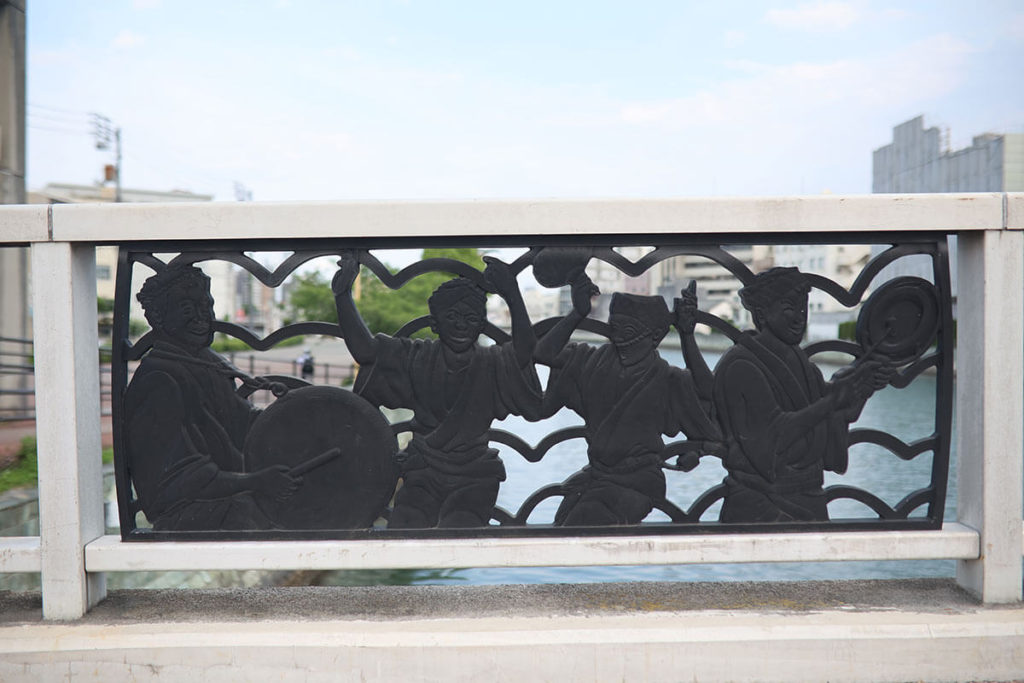
During this season, a recommended activity for visitors to Tokushima is to stroll along the riverside and enjoy the practice scenes of Awa Odori. Starting from JR Tokushima Station, I will introduce two recommended routes.

❶ The Suketo River Course(助任川コース)
Tokushima Central Park, located on the north side of JR Tokushima Station, is a park built on the site of the former castle ruins. Within the park is a small mountain called “Shiroyama,” which preserves its rich natural beauty.

How about taking a leisurely stroll through the park during this season when the sun sets late and enjoying the practice scenes of Awa Odori dancers? The practice begins around 18:30, and the sound of bells and drums from the Ohayashi(お囃子) can be heard from various parts of the park.


Many ren groups continue their practice until 21:00. The men wear tabi socks while the women wear geta sandals. They passionately practice, with sweat dripping down their foreheads, just like in the actual performance.
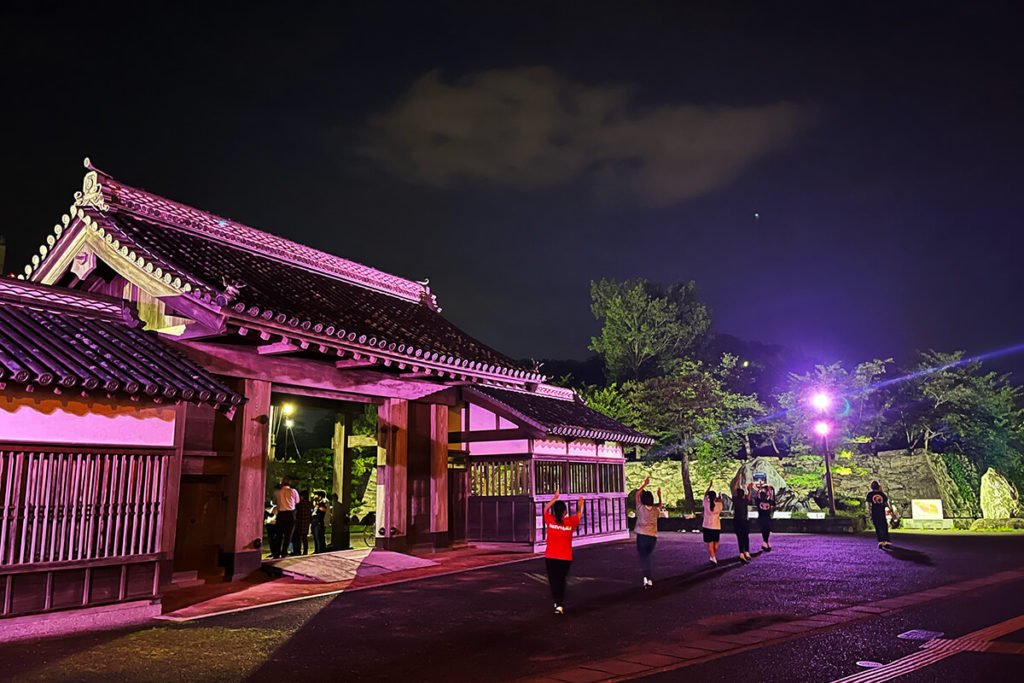


It’s interesting how each team has slightly different accompanying music and dance styles.
Taking a complete lap around the park covers a distance of approximately 2 kilometers. After enjoying a refreshing walk and working up a pleasant sweat, I recommend treating yourself to a casual drink or a satisfying meal at the shops near Tokushima Station.

❷ The Shinmachi River Course(新町川コース)

In the past, numerous white-walled indigo storehouses lined both banks of the nearby river. Tokushima thrived in the production of indigo dye from the Edo period to the early Meiji era.
There is a bridge straight ahead when you go south from JR Tokushima Station. The river flowing under that bridge is called Shinmachi River, and on the right-hand side, you’ll find Aibahama (藍場浜) Park. During the Awa Odori festival, they set up a large dance stage in this park. Outside the festival period, numerous dance groups also utilize this park to practice.

As you get closer, you can hear the powerful beats of drums and bells in sync while the shamisen and flute produce gentle melodies. The dancers raise their hands and feet following the rhythm, shouting energetic cheers like “Yatto sa!” and “Yoisaa!” People, including those who intentionally come to watch and those who happen to pass by, stop and observe the practice of the famous group dressed in matching T-shirts.

There was a scene where a businessperson who came to Tokushima on a business trip couldn’t resist the two-beat rhythm and started dancing, even in their suit attire.
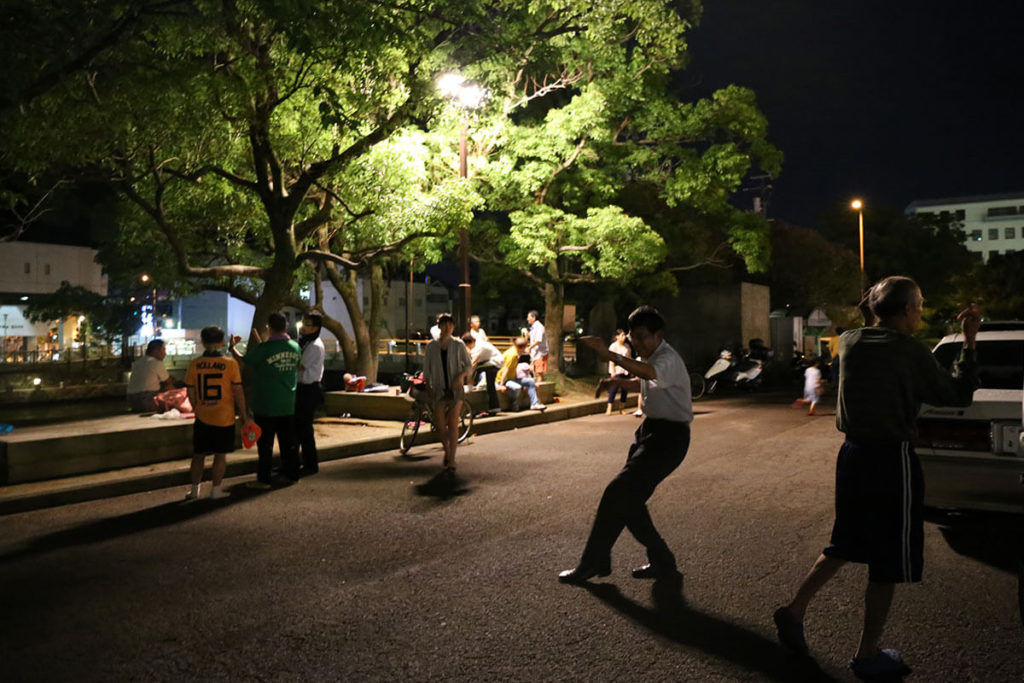
And from Aibahama Park, it’s just a short 5-minute walk to the bustling downtown area of Tokushima. Indulge yourself in delicious local cuisine for a late dinner and savor the flavors of Tokushima.

There were also spectators watching their practice sessions.
The Passion of the Dancers Upholding the Festival
The Awa Odori in Tokushima City is held every year for four days from August 12th to 15th. The dancers gather at the practice venue after finishing their work and household chores, dedicating themselves to rigorous training in preparation for those days.


If we regard the Awa Odori festival as the “celebration” day, then these practice scenes serve as the essential everyday landscape of Tokushima that underpins that “celebration” day. Of course, I highly recommend enjoying the Awa Odori festival during the festival season.

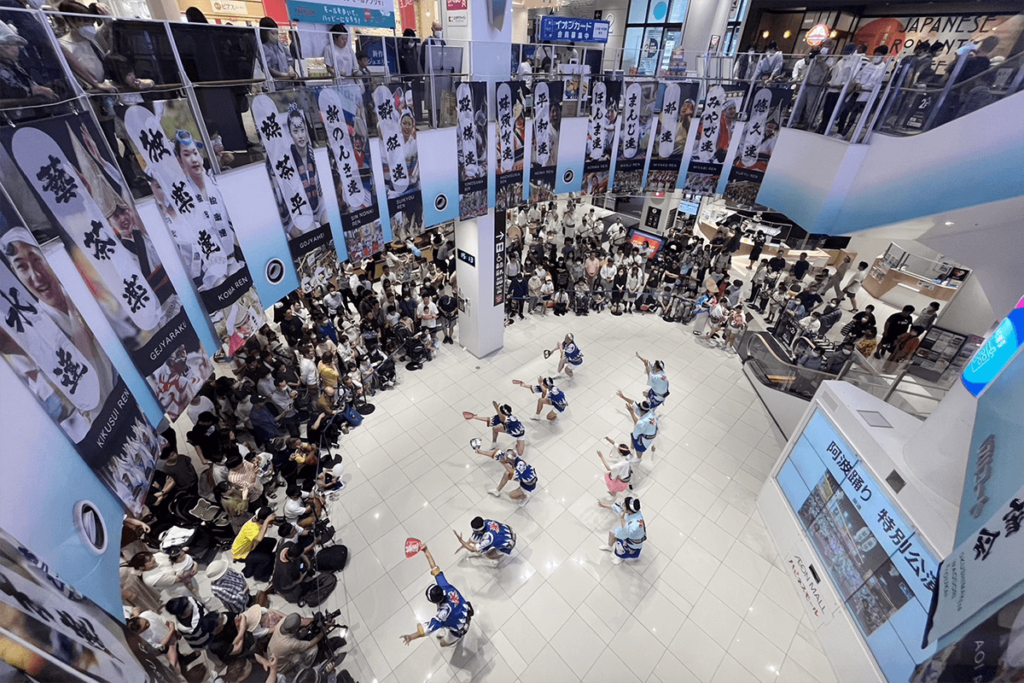
However, I’d say that the most essential aspect that truly energizes the festival is the dancers’ passionate commitment to their performances and their daily practices. I would be delighted if you could also appreciate the everyday landscapes passed down through generations in Tokushima.

I’m a freelance editor and director based in Tokushima, Shikoku.
Travel is my passion.I love the time when the extraordinary life of a traveler and the everyday life of the people who live there intersect.
I mainly would like to share with you the lifestyle of the people of Shikoku and the sights to see.


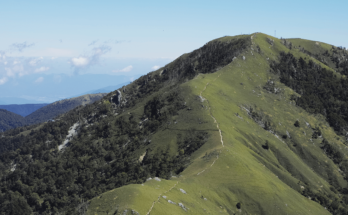


 HTJ has a YouTube page! Check it out
HTJ has a YouTube page! Check it out